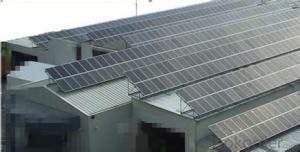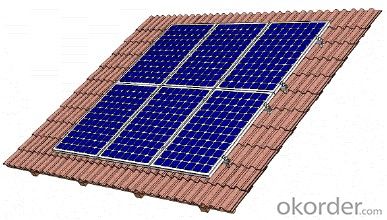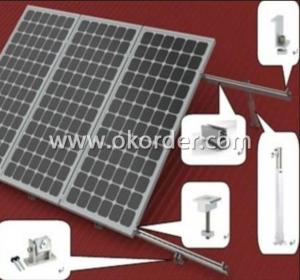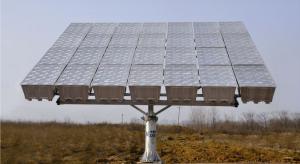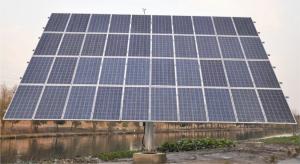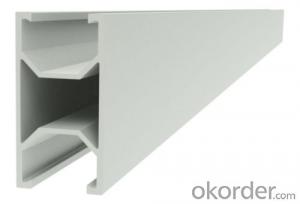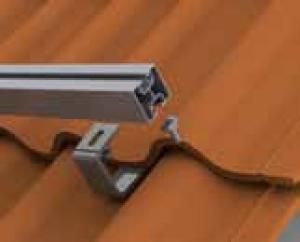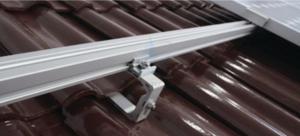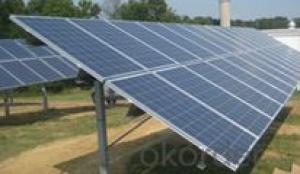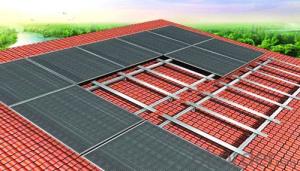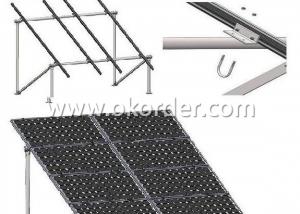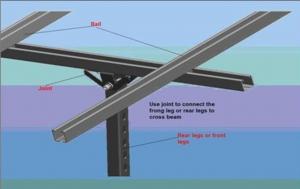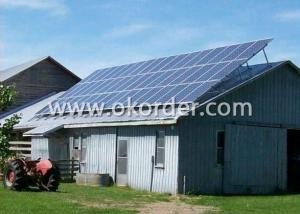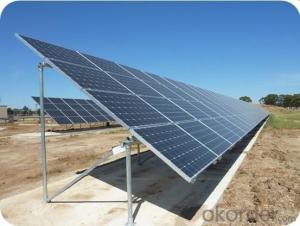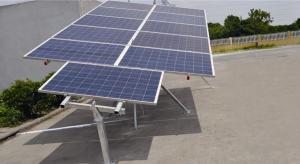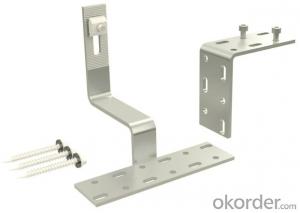Metal Roof Solar Mounting Systems - Scale Tile Roof System
- Loading Port:
- China Main Port
- Payment Terms:
- TT OR LC
- Min Order Qty:
- -
- Supply Capability:
- -
OKorder Service Pledge
OKorder Financial Service
You Might Also Like
Roof System - scale tile
Die umfassende Auswahl an unterschiedlichen Komponenten und Systemen ermöglicht es,
mit Schletter-Systemen nahezu jede Modulkonfiguration auf jedem Dach zu befestigen.
Durch unsere hochwertigen und durchdachten Komponenten erzielen Sie schnelle Montagezeiten und verlässliche Haltbarkeit mit statischem Nachweis.
Bei der Auswahl der für Ihr Dach am besten geeigneten Variante haben Sie die Wahl zwischen einer dachparallelen und einer aufgeständerten Lösung.
Einlagig, 2 Querträger pro Modulreihe
Befestigung auf der U-konstruktion mittels Dachhaken, Stockschrauben oder Sonderbefestigungen
Modulklemmen für gerahmte Module auch mit Potentialausgleich erhältlich
Kombinierbar mit allen Schletter-Systembauteilen
Einfach aufzubauen
Preiswert
- Q: Are there any specific requirements for clamps when using a solar mounting system on a standing seam metal roof?
- Yes, there are specific requirements for clamps when using a solar mounting system on a standing seam metal roof. The clamps should be designed specifically for standing seam roofs to ensure a secure and watertight connection. They should be compatible with the specific profile and dimensions of the standing seam, and should have sufficient strength to withstand the wind and snow loads in the area. Additionally, the clamps should be made of materials that are corrosion resistant to protect against weathering and ensure the long-term durability of the solar installation.
- Q: Can a solar mounting system be installed on a library or learning center?
- Yes, a solar mounting system can be installed on a library or learning center.
- Q: Can solar mounting systems be installed on rooftops with wind turbines?
- Yes, solar mounting systems can be installed on rooftops with wind turbines. However, proper planning and design are necessary to ensure that both systems can coexist without any interference or shading issues.
- Q: What is the expected energy output increase with a solar mounting system?
- The expected energy output increase with a solar mounting system can vary depending on several factors, such as the type of mounting system used, the orientation and tilt of the solar panels, and the specific location and climate conditions. On average, a well-designed and properly installed solar mounting system can increase energy output by 10-20% compared to panels that are not mounted. However, it is important to note that individual results may vary, and it is recommended to consult with a solar professional to determine the expected energy output increase for a specific installation.
- Q: Can a solar mounting system be used in urban areas?
- Yes, a solar mounting system can be used in urban areas. In fact, solar panels are increasingly being installed in urban areas to harness the available rooftop space and generate clean energy. The mounting systems are designed to be versatile and adaptable to various urban settings, whether it's on rooftops, facades, or even integrated into urban infrastructure. With the right design and installation, solar mounting systems can effectively and efficiently utilize urban spaces for renewable energy generation.
- Q: Are solar mounting systems adjustable?
- Yes, solar mounting systems are adjustable. They are designed to be adjustable in order to optimize the angle and orientation of the solar panels for maximum sunlight exposure and energy generation.
- Q: Are there any specific requirements for installing solar mounting systems in coastal or marine environments?
- Yes, there are specific requirements for installing solar mounting systems in coastal or marine environments. These include using materials with high corrosion resistance, such as stainless steel, to withstand the saltwater and high humidity. The mounting system should also be designed to withstand strong winds and potential storm surges. Additionally, proper grounding and electrical protection measures must be implemented to prevent any damage from saltwater corrosion.
- Q: Are there any specific considerations for installing a solar mounting system in a snowy climate?
- Yes, there are several specific considerations for installing a solar mounting system in a snowy climate. Firstly, it is important to choose a mounting system that can handle the weight of snow accumulation. This may require using stronger and more durable materials, as well as ensuring proper anchoring and support structures. Additionally, the tilt angle of the solar panels should be optimized to allow for snow shedding. A steeper tilt angle can help prevent snow buildup and allow for better solar panel performance. Regular maintenance, such as snow removal, may be necessary to ensure optimal solar panel efficiency during the winter months. This can be done manually or by using automated snow removal systems. Lastly, it is crucial to consider the impact of reduced sunlight exposure due to shorter daylight hours and cloud cover in snowy climates. This may require adjusting the system's positioning and size to compensate for lower levels of solar radiation. Overall, careful planning, appropriate system design, and proactive maintenance are essential when installing a solar mounting system in a snowy climate.
- Q: Can a solar mounting system be installed on a pole?
- Yes, a solar mounting system can be installed on a pole. Pole-mounted solar systems are a popular option for installations where roof or ground space is limited. These systems use sturdy poles to securely hold the solar panels, allowing for optimal sun exposure and easy maintenance.
- Q: How is a solar mounting system protected from corrosion?
- A solar mounting system is typically protected from corrosion through the use of corrosion-resistant materials such as aluminum or stainless steel. These materials have inherent resistance to corrosion and are able to withstand exposure to various weather conditions and environmental factors. Additionally, protective coatings or treatments may be applied to further enhance the system's resistance to corrosion. Regular inspections and maintenance are also important to identify and address any signs of corrosion early on to prevent further damage.
Send your message to us
Metal Roof Solar Mounting Systems - Scale Tile Roof System
- Loading Port:
- China Main Port
- Payment Terms:
- TT OR LC
- Min Order Qty:
- -
- Supply Capability:
- -
OKorder Service Pledge
OKorder Financial Service
Similar products
Hot products
Hot Searches
Related keywords
